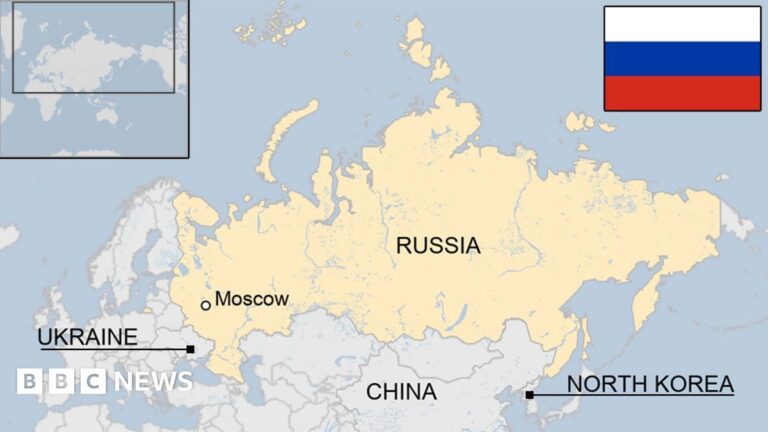As winter approaches and the heating season begins, Russia has intensified its strikes on Ukraine’s gas infrastructure, escalating concerns over energy security in the region. Targeted attacks on pipelines and gas facilities threaten to disrupt supply amid already heightened tensions, raising alarm among Ukrainian officials and international observers. This latest development underscores the growing challenges Ukraine faces in maintaining critical energy services as the conflict continues.
Russia Intensifies Attacks on Ukraine’s Gas Infrastructure Amid Critical Heating Period
Recent assaults have targeted critical points within Ukraine’s gas infrastructure, raising alarms about the country’s ability to sustain heating supplies during plummeting temperatures. Strategic facilities, including compressor stations and key pipeline junctions, have repeatedly come under fire, leading to widespread service interruptions and complicating repair efforts amid ongoing conflict. Energy officials warn that the sustained disruptions could leave millions vulnerable to energy shortages as winter deepens across Eastern Europe.
Authorities report a sharp rise in the frequency and intensity of attacks, particularly focusing on:
- Main pipeline relay stations
- Gas metering and regulating installations
- Logistics hubs critical for distribution
The government’s emergency response teams are mobilized around the clock to minimize the impact, while urging international partners for support. Experts emphasize that safeguarding energy infrastructure is vital not only for domestic stability but also to prevent wider regional energy shocks, given Ukraine’s role as a transit country for European gas supplies.
| Date | Targeted Facility | Damage Level | Current Status |
|---|---|---|---|
| April 20 | Zaporizhzhia Compressor | Severe | Under Repair |
| April 22 | Dnipro Metering Station | Moderate | Operational with Reduced Capacity |
| April 24 | Kharkiv Distribution Hub | Critical | Offline |
Impact of Strikes Raises Concerns Over Energy Security and Civilian Safety
The intensified bombardment of Ukraine’s gas infrastructure comes at a critical time, just as the country enters its peak heating season. Disruptions to key pipelines and compressor stations threaten to destabilize energy supplies, putting millions at risk amid plunging temperatures. Officials warn that repeated attacks not only undermine Ukraine’s immediate energy security but could also trigger broader regional shortages, affecting neighboring countries that depend on Ukrainian transit routes. The growing vulnerability of these vital assets highlights the urgent need for reinforced protective measures and contingency planning.
Beyond infrastructure damage, the strikes have raised alarming concerns about civilian safety in affected areas. Residential zones located near targeted energy facilities face increased risk from secondary explosions and fires. Emergency services are stretched thin, contending with power outages and hazardous conditions that hamper rescue efforts. Key risks include:
- Exposure to freezing temperatures due to heating shortages
- Potential chemical hazards from damaged gas installations
- Displacement and humanitarian crises in vulnerable communities
| Impact Aspect | Potential Consequences | Urgency Level | |||||||||||||||||||||||||||||||
|---|---|---|---|---|---|---|---|---|---|---|---|---|---|---|---|---|---|---|---|---|---|---|---|---|---|---|---|---|---|---|---|---|---|
| Energy Supply Disruption | Reduced heating and power availability | High | |||||||||||||||||||||||||||||||
| Civilian Safety | Risk of injury or displacement | Medium | |||||||||||||||||||||||||||||||
| Regional Stability | Cross-border energy shortages |
The intensified bombardment of Ukraine’s gas infrastructure comes at a critical time, just as the country enters its peak heating season. Disruptions to key pipelines and compressor stations threaten to destabilize energy supplies, putting millions at risk amid plunging temperatures. Officials warn that repeated attacks not only undermine Ukraine’s immediate energy security but could also trigger broader regional shortages, affecting neighboring countries that depend on Ukrainian transit routes. The growing vulnerability of these vital assets highlights the urgent need for reinforced protective measures and contingency planning. Beyond infrastructure damage, the strikes have raised alarming concerns about civilian safety in affected areas. Residential zones located near targeted energy facilities face increased risk from secondary explosions and fires. Emergency services are stretched thin, contending with power outages and hazardous conditions that hamper rescue efforts. Key risks include:
|




